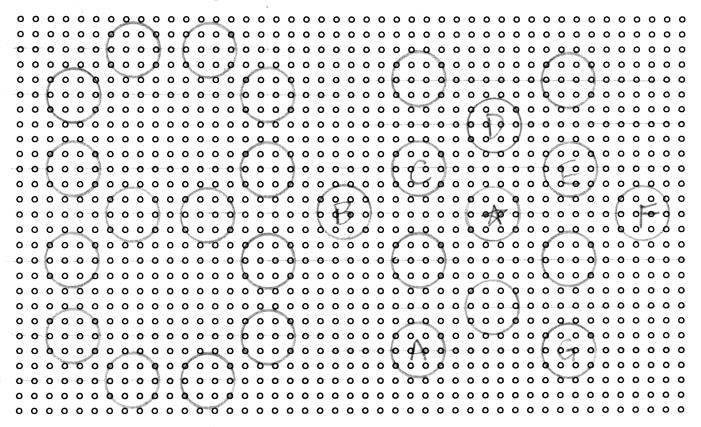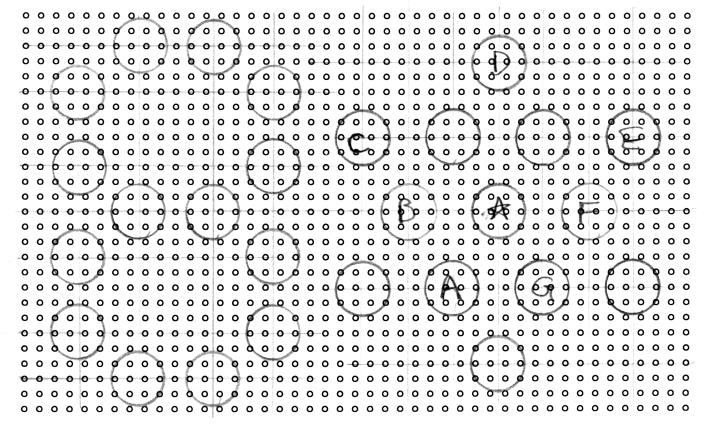Alternate Tuner Layout

There are two ways to do the note display (above right): (1) the way I had it in the original video, and (2) the way shown above, where it is rotated 30 degrees and the notes moved over one. I think I'm partial to the above. I don't like the way it doesn't have C on the outer ring, but the "house" pattern of C maj / A min scales are perhaps a bit more contiguous looking to my eyes, and the A note is directly above the C note which seems mildly fortuitous as well. Given rotation, there are only two major / minor scale patterns regardless of the starting note. I would of course prefer one pattern, but I have a feeling that isn't possible to do and still get an easily recognizable pattern to the eye (I'm all ears to suggestions of any sort). With both (1) and (2) the B/C note transition (i.e. octave switch point) is located on the left horizontal axis, so that's a wash.
The octave display is a 7-segment deal on the left. It only changes on the B/C note boundary, so a single number may make the most sense here. Numbers are fairly universal when it come to Earth-based languages.
All LEDs are 10mm diffused high brightness through-hole types, and I believe there is enough empty room on the board for the driver ICs and associated passives. [EDIT] Will most likely use red LEDs for the octave digit as the 1.7V forward voltage drop can support two in series with the driver IC @ 5V. The others are singles so they can be any color (all other colors have higher forward voltage drops). May make the inner ring a different color than the outer, with the center LED white or something. I ordered a large assortment of many colors for experimentation along these lines.
==============
My wife teaches private piano, and one of the materials she uses a lot lately is the "Pattern Play" series by Akiko and Forrest Kinney. Being a guitarist I'm a huge believer in pattern-based learning, and it's interesting seeing it applied to keyboard. (As an instrument designer, what might be the most pattern-centric and most playable configuration of keys, what would those keys look like and how would they function?)




